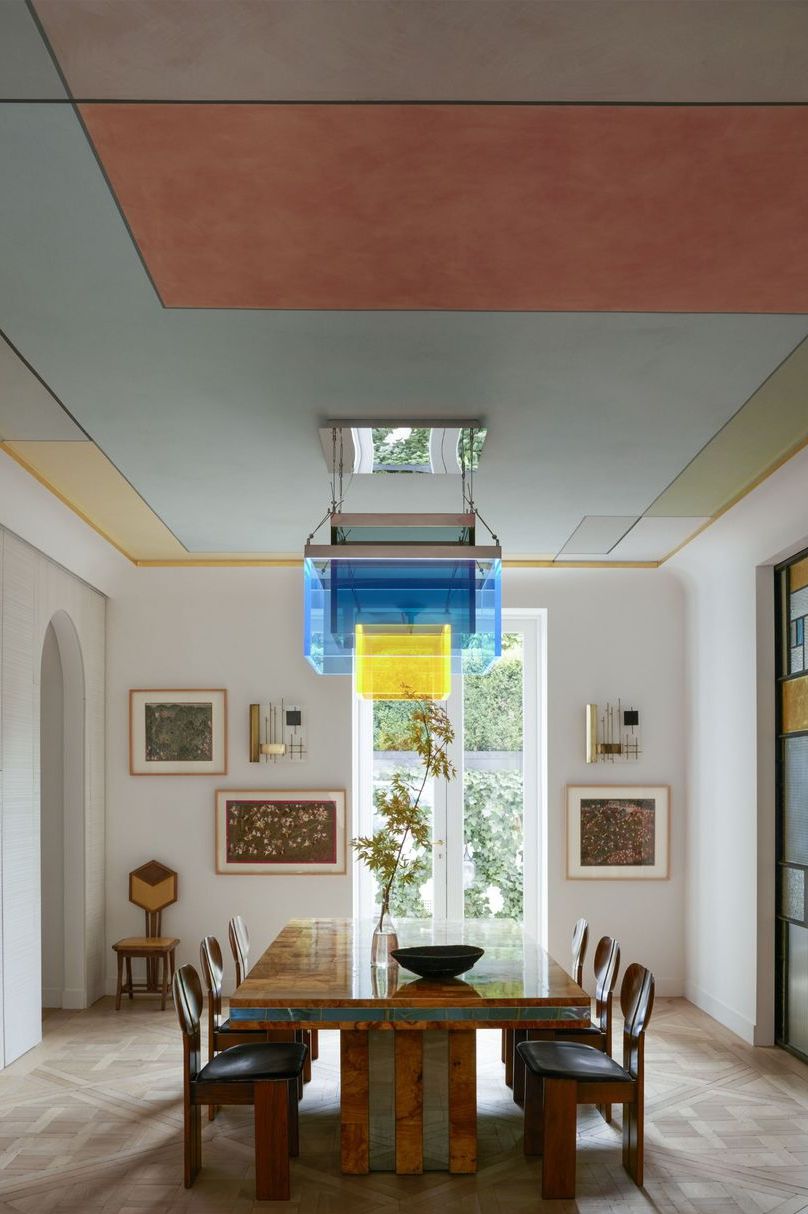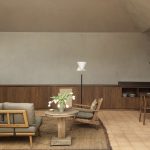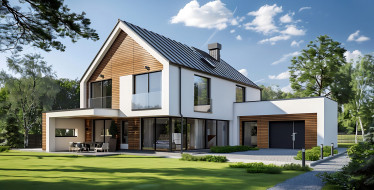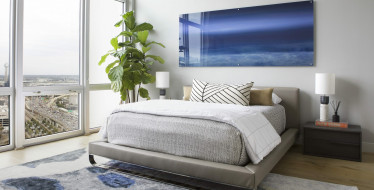We believe that every element of a home deserves careful consideration and intentional design. However, the ceiling is too often overlooked. It is commonly known as the 6th plane, holding immense potential to transform a space. And most of the time, it is just considered to be a lid of sorts to the overall space. By incorporating creative techniques such as wallpaper, architectural treatments, and strategic lighting, we can elevate the overall aesthetic and ambiance of a room while utilizing this underused surface. We want to explore the thought process behind designing ceilings with intention, while also delving into the integration of light and sound to create an immersive experience.
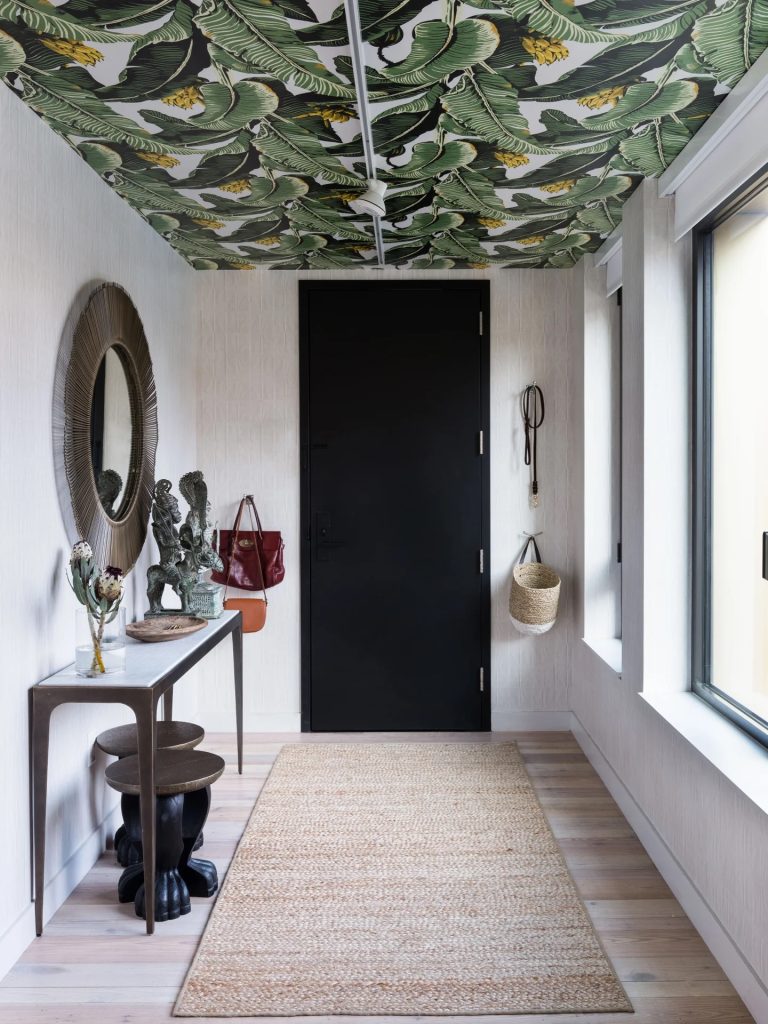
Wallpaper
While we often associate wallpaper with adorning walls, extending it onto the ceiling can add a unique dimension to a room. The lines that this creates really lends itself to creating stunning visuals within the space. By selecting patterns or textures that harmonize with the overall design, the wallpaper on the ceiling can act as an extension of the walls, creating a sense of continuity and visual flow. Whether it’s a subtle texture or a bold, eye-catching pattern, the ceiling becomes an unexpected focal point that enhances the room’s overall character. We often design to make the eye stay level with the walls, but if utilized correctly, the ceiling adds an entirely different dimension to the equation.
Bold Color
Painting the ceiling with a bold color can transform a space and evoke specific emotions. While white ceilings are common, and provide a nice, clean palette to work with, incorporating vibrant hues can infuse energy and personality into a room. Dark, moody tones such as navy blue or charcoal gray can create a cozy and intimate atmosphere, while lighter shades like pastels or neutrals can lend an air of serenity and relaxation. A bit more of that in our recent post about creating your own sanctuary. By choosing a complementary color scheme, the ceiling becomes an integral part of the room’s design, adding depth and interest.

Sound
Incorporating sound-absorbing materials on the ceiling can significantly improve the acoustic qualities of a room. From home theaters to music rooms, spaces that require optimal sound quality can benefit from acoustic treatments. Suspended panels or specialized acoustic ceiling tiles can help to minimize echo and reverberation, ensuring a clear and immersive audio experience. Additionally, integrating hidden speakers within the ceiling can provide a seamless audio solution, enhancing the overall aesthetic while optimizing sound distribution. Utilizing the ceiling as another plane that acts as a support for sound efficiency is key.
Architectural Elements
To introduce architectural interest, incorporating treatments like wood beams or slatted panels on the ceiling can be highly impactful. Wood beams can evoke a rustic or traditional aesthetic, providing warmth and character to the space. Similarly, slatted panels offer a contemporary and visually appealing solution, playing with light and shadow while creating a sense of architectural intrigue. These treatments can be integrated to define specific areas within an open floor plan or to draw attention to architectural features such as a fireplace or a central light fixture. Plus, the use of softer materials such as wood will help with sound absorption throughout the space.

Lighting
The ceiling is an ideal canvas for incorporating various lighting solutions. Recessed lighting, chandeliers, pendant lights, or track lighting can all be strategically positioned on the ceiling to create a desired ambiance. By considering the purpose of each space, we can determine the appropriate lighting fixtures and their placement. For instance, task lighting in a kitchen or home office can enhance functionality, while soft ambient lighting in a bedroom or living area promotes relaxation. Additionally, the use of cove lighting, where LED strips are concealed within architectural elements, can provide a subtle, indirect glow that enhances the overall mood of the room. If you want to trick the eye into not breaking the space into “walls” and “ceiling”, tie the two planes together with a continuous light. The result is smooth and visually stunning.
Designing the ceiling with intention is an essential aspect of creating a cohesive and harmonious space. It is quite literally thinking outside the box. By extending the current design aesthetic onto the ceiling, we can transform it into a striking and purposeful element. Need a few more ideas on what to do with your ceiling? Check out this quick read by our friends at Homes & Gardens.


